#Trochiliformes
Text

[1283/10977] Black-tailed Trainbearer - Lesbia victoriae
Order: Trochiliformes (hummingbirds)
Family: Trochilidae
Subfamily: Lesbiinae
Photo credit: Alex Luna via Macaulay Library
#birds#Black-tailed Trainbearer#Trochiliformes#Trochilidae#Lesbiinae#Lesbia#birds a to z#undescribed
451 notes
·
View notes
Photo


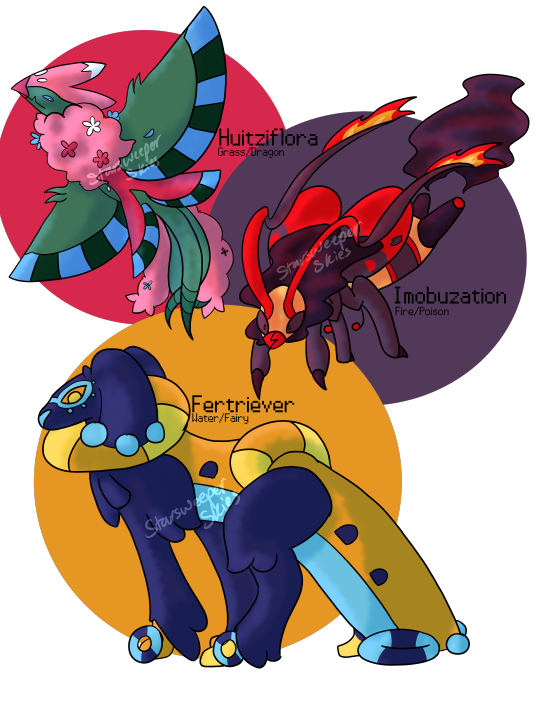
With Scarlet and Violet right around the corner (and less than a day away! Can you believe it?) I went back to the Fakemon project I started at the beginning of this year. It was a major passion project, and is still being worked on to this day. I currently have no intention of making a game out of them, so it’s more likely to someday become a video series once I can either fix or purchase a new microphone. And if you’re wondering about the style change between the first one and the other two, it was simply me saying ‘screw it’ and using my usual simple shading instead of trying to mimic the official art. Regardless, here are your starters of the Orzak region and their full evolution lines.
Orchili (from Trochiliformes and Orchids), the Hummer Pokemon. Grass type. Overgrow/Honey Gather (HA). Orchili are often found nestled in large groups of flowers. Their ruffs will later produce differing blooms based on where they were born.
Passylph (from Passiflora and Sylph, a type of hummingbird), the Flightful Pokemon. Grass. Overgrow/Honey Gather (HA). Passylph’s wings are said to beat at 100 beats per minute. Their loud buzzing is said to deter other grass types.
Huitziflora (from Huitzil and Flora), the Flowereater Pokemon. Grass/Dragon. Overgrow/Flower Gift (HA). Its flowers have grown to mimic the flowers in its territory. They battle fiercely with each other for mates.
Huitziflora’s flower colors vary depending on if it was born in the North, East, South, or West of the region. The pink, blue, and white colors are those of the Southern region.
Bumblaze (from Bumble and Blaze), the Bumble Pokemon. Fire/Bug type. Blaze/Levitate (HA). Its flames burn with a mysterious substance that it leaves behind when it flies. Forest fires are common where these pokemon nest.
Bombug (from Bomb and Bug), the Waxweld Pokemon. Fire/Bug. Blaze/Levitate (HA). It carries around a ball of wax it drops onto its foes to slow them down, then cooks their food using the flames it lights with its antennae.
Imobuzation (from Immolation and Buzz), the Waxweld Pokemon. Fire/Poison. Blaze/Levitate (HA). Its stingers are known to freeze its opponents with its waxy venom. It then stores its prey underground for its young to feed on.
Imobuzation’s smoke color differs depending on the region it evolves in. The dark purple smoke colors are those of the Southern region.
Puppaddle (From pup and paddle), the Bobbing Pokemon. Water type. Torrent/Ball Fetch (HA). A friendly Pokemon, Puppaddle are often seen as the companion to the elderly and the disabled due to its smarts, but it is also popular with hunters for its tracking abilities.
Goldifloat (from golden, float, and goldies, a nickname for golden retrievers), the Sporting Pokemon. Water. Torrent/Ball Fetch (HA). The rings around its body expand when it finds someone who needs help. While most often this is used to help drowning humans and Pokemon, its rings also have some healing abilities.
Fertriever (from Ferry and Retriever), the Ferry Pokemon. Water/Fairy. Torrent/Defiant (HA). Fertriever is known to carry large amounts of Pokemon and people across the water at a time. It likes to push itself to do its best, no matter the odds, to save people.
Fertriever’s yellow and orange coloration may actually be different depending on where in the region it evolves in. The yellow and orange are those of the Southern region.
And there we have it! I’ll probably be plopping these suckers in batch of 3 pictures going forward as I readjust the Pokedex for the new Scarlet and Violet additions, new megas, and a possible new ‘gimmick’. (Ironically, I chose Past vs Future for this project, before Scarlet and Violet was announced. Although in this case it’s more Tradition vs Innovation.)
#fakemon#my art#water fakemon#water starter#fire fakemon#grass fakemon#grass starter#fire starter#fakemon starters#Orzak Region Pokedex
2 notes
·
View notes
Text
The common swift, Apus apus, is part of the order Apodiformes, which includes the swifts (Apodidae), the treeswifts (Hemiprocnidae), and the hummingbirds (Trochilidae), although some taxonomists prefer to separate hummingbirds into an order of their own (Trochiliformes). There are nearly 450 identified species within Apodiformes, losing in numbers only to the passerines (Passeriformes).
The name Apodiformes comes from the Greek for 'footless', as does Apus: α, "without", and πούς, "foot". This is because they were previously thought to be a type of sallow without feet—which is why they are also called sallows in several languages. They've been linked to the legend of the martlet, a mythical bird in English heraldry, which does not have feet and spends all their life on the wing.
Indeed, the feet of every species within the order have limited function due to their shortness, only allowing perching. The common swift takes this to the extremes by spending effectively their whole lives in the air, only landing to nest. If they do end up on the ground, they might struggle to lift back into air, making them vulnerable to predation and accidents.
The common swift is easily recognisable in flight for their short forked tail and long wings that resemble a crescent moon. They make long glides and their wingbeats are deep and quick. From a closer distance, you'll see that they are dark brown in colour with a white patch on their chin.
Their call is an easily identified high-pitched scream. In summer evenings, you may catch tens of swifts flying in circles in the sky, screaming and answering others' screams. The purpose of these gatherings is likely social; bonding and exchanging information, but they may also be observing the weather to see whether it is time to migrate soon.
Previously swifts nested commonly in ancient forests in woodpecker burrows or other holes in trees or cliffs, but today, because of the changing environment, they have had to adapt to living in cities, often in gaps between tiles or under window sills or eaves. They enter their nesting holes in full tilt without stopping, and characteristically take off with an initial free-fall.
Swifts are loyal to their partners and nesting sites, and repair their old nests when returning to them in the beginning to summer.
When not nesting, there is no reason they should land: they can eat, drink, mate, and even sleep in the air. Common swifts have been recorded to be on the wing for ten months continously, which is longer than any other species. They can fly faster than 110 km/h and cover millions of kilometers in a lifetime.

#they're called devil's birds#because they like to nest in church towers and scream kind of eerily#birds#ornithology
0 notes
Text
Hummingbird – Know About This Beautiful Bird Lifestyle
Hummingbird, any of about 320 species of small, frequently brightly colored catcalls of the family Trochilidae, generally placed with the swifts in the order Apodiformes but occasionally separated in their own order, Trochiliformes. The brilliant, spangling colors and elaborately technical feathers of numerous species led the 19th- century British naturalist John Gould to give numerous hummingbirds fantastic common names, numerous of which are still in use – e.g., soubrette, puck, hill star, wood star, sapphire, topaz, sun gem, and sylph.
Hummingbirds are confined in distribution to the New World, where the topmost variety and number of species do in South America. About 12 species are set up regularly in the United States and Canada. Only the ruby-throated hummingbird( Archilochus colubris) types in eastern North America, where it’s set up from Nova Scotia to Florida.
Hummingbird Geography
Raptors, shorebirds, suckers, songbirds, and other raspberry species are set up throughout the world, but hummingbirds are only located in the Western Semicircle, from Alaska and northern Canada to the southern tip of South America.
Only a sprinkle of species is regularly seen in North America, though unique species can be set up in cornucopia throughout South America, Central America, and the Caribbean. The species that nest in North America are generally migrants, however numerous other hummingbirds stay in the same lush, tropical ranges all time round.
Physical Characteristics
Size
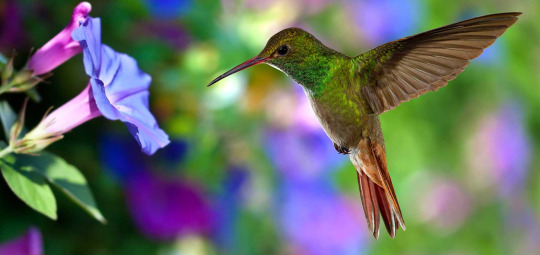
Read Our More Posts:
BULLDOG
MUNCHKIN CAT
Turkish Angora
Shape
Hummingbirds may look different than other raspberry species, but all hustlers have an analogous shape that makes them incontinently recognizable. The stocky streamlined body, long bodies, and long, narrow bill are features set up in every hummingbird’s shape.
Wings
A hummingbird’s bodies are long, narrow, and phased to give it better dexterity in the air. Indeed more important than sect shape, still, is its construction.
The shoulder and elbow joints of a hummingbird’s sect are veritably close to the body, which allows each sect to pivot and cock. This is critical for a hummingbird’s capability to change flight directions and hang.
Bill
The needle- suchlike bill of a hummingbird is its most unique physical particularity. The bill is extremely long and thin compared to the raspberry’s overall size, and it’s used as a tube for the raspberry to lick quencher from flowers, tire wells, and affluents with its long and nimble lingo.
Plumage
Numerous raspberry species have bold colors and patterns, but hummingbirds ’ overall opalescent plumage is unique. In particular, the brightly colored throat or gorget of numerous manly hummingbirds is a crucial field mark in shape and color.
Ladies are generally plainer but still show opalescent colors for numerous species.
Legs
Hummingbirds’ legs and bases are veritably bitsy and short; so small, in fact, that the catcalls can not walk. They can manage an awkward sideways hop, but the hummingbird’s primary locomotion is flight. Indeed when moving just an inch or two, hummingbirds will generally use their bodies rather than their bases.
Hummingbird Behavior
Aggression
Numerous catcalls are aggressive and will drive interferers down from their home, but hummingbirds can be among the fiercest catcalls. This is especially astonishing when their bitsy size is taken into consideration.
numerous poachers have observed hummingbirds successfully repelling much larger catcalls down from their preferred affluents and flowers, and these bitsy catcalls will indeed attack other creatures and humans.
From their geographic distribution to their physical appearance to their geste, there are numerous rates that make hummingbirds unique. Understanding what a hummingbird is can help poachers more appreciate these avian jewels and make observing them indeed more pleasurable.
Feeding
Hummingbirds eat nearly simply quencher and small insects similar to gnats and spiders. While some hummingbirds will experiment with fruit, doing so is generally a way to prize sweet juice analogous to quencher and they don’t eat the fruit’s meat.
Hummingbirds don’t eat seeds at each, nor will they nibble at the suet, chuck, nuts, or scraps.
Pollination
Like numerous insects, hummingbirds are critical for flower pollination. numerous flowers have evolved stretched blooms that bear the catcalls to encounter against pollen in order to feed, indeed with their long bills.
As hummingbirds get pollen on their heads and bills, they transfer it between different flowers and help the shops propagate.
more details:https://animalatoz.com/hummingbird/
0 notes
Text
Hummingbird – Know About This Beautiful Bird Lifestyle
Hummingbird, any of about 320 species of small, frequently brightly colored catcalls of the family Trochilidae, generally placed with the swifts in the order Apodiformes but occasionally separated in their own order, Trochiliformes. The brilliant, spangling colors and elaborately technical feathers of numerous species led the 19th- century British naturalist John Gould to give numerous hummingbirds fantastic common names, numerous of which are still in use – e.g., soubrette, puck, hill star, wood star, sapphire, topaz, sun gem, and sylph.
Hummingbirds are confined in distribution to the New World, where the topmost variety and number of species do in South America. About 12 species are set up regularly in the United States and Canada. Only the ruby-throated hummingbird( Archilochus colubris) types in eastern North America, where it’s set up from Nova Scotia to Florida.
Hummingbird Geography
Raptors, shorebirds, suckers, songbirds, and other raspberry species are set up throughout the world, but hummingbirds are only located in the Western Semicircle, from Alaska and northern Canada to the southern tip of South America.
Only a sprinkle of species is regularly seen in North America, though unique species can be set up in cornucopia throughout South America, Central America, and the Caribbean. The species that nest in North America are generally migrants, however numerous other hummingbirds stay in the same lush, tropical ranges all time round.
Physical Characteristics
Size

0 notes
Photo

Hummingbird by info373 https://ift.tt/2ATC0dG
32 notes
·
View notes
Photo


Ruby-throat (Archilochus colubris) enjoying lunch.
#ruby-throated hummingbird#conservation status: least concern#Animalia#Chordata#Aves#Apodiformes#Trochiliformes#Trochilidae#Trochilinae#Archilochus#Archilochus colubris#Trochilus colubris#hummingbirds#typical hummingbirds#Nikon D3400#nikonphotography#my birbs#photographers on tumblr#nature photography#Black Bayou Lake National Wildlife Refuge#birds of Canada#native birds of the Eastern United States#pollinator birds#wildlife
4 notes
·
View notes
Photo

Hummingbird by info373
#Kolibri#Trochilidae)#rainforest#Trochiliformes#Nektar#Blütennektar#Costa Rica#America dailyinspirat
1 note
·
View note
Photo
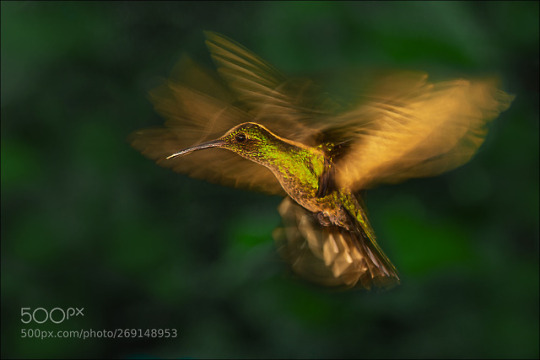
Hummingbird by info373
1 note
·
View note
Photo
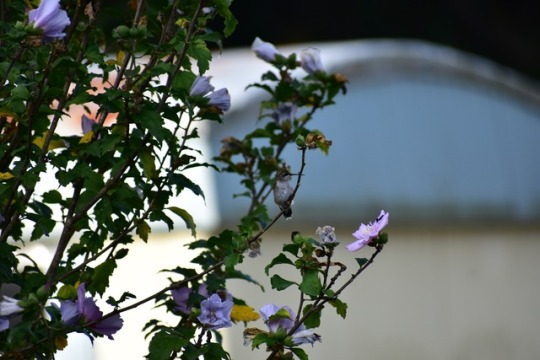
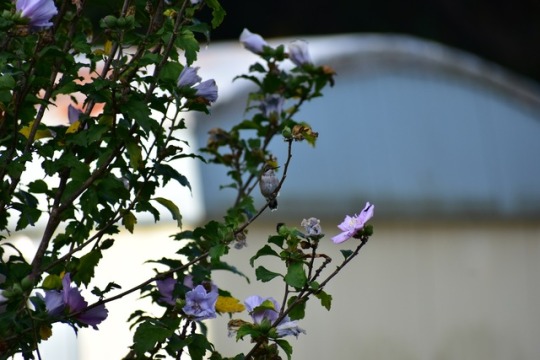
👑 King of the Yard 👑
I was a little surprised when I took this pic because I assumed by October that all the hummingbirds had moved on but not this one.
#ruby-throated hummingbird#Archilochus colubris#conservation status: least concern#Animalia#Chordata#Aves#Apodiformes#Trochilidae#Archilochus#Trochilus colubris#birds of Canada#native birds of the Eastern United States#vagrant birds of Central America#pollinator birds#wildlife#Nikon D3400#Trochiliformes#Trochilinae
8 notes
·
View notes
Text

[979/10,977] Black-billed Streamertail - Trochilus scitulus
Order: Trochiliformes (hummingbirds)
Family: Trochilidae
Subfamily: Trochilinae
Photo credit: Lisa & Li Li via Macaulay Library
#birds#Black-billed Streamertail#Trochiliformes#Trochilidae#Trochilinae#Trochilus#birds a to z#undescribed
280 notes
·
View notes
Video
Allen's Hummingbird, Selasphorus sasin by Bill Bouton
Via Flickr:
This individual I've identified as "Allen's", and not "Rufous", is a bird that provided a view of spread tail feathers among camera burst shots. Arroyo Grande, San Luis Obispo County, California, USA. The use of ANY of my photos, of any file size, for any purpose, is subject to approval by me. Contact me for permission. My email address is available at my Flickr profile page. Larger file sizes of my images are available upon request.
14 notes
·
View notes
Photo

New on 500px : Hummingbird by info373 by info373 from 500px For download Click Here
0 notes
Photo

Hummingbird by info373
0 notes
Video
. . 🍁 عَنْ أَبِي هُرَيْرَةَ، عَنِ النَّبِيِّ صلى الله عليه وسلم قَالَ " يَتَقَارَبُ الزَّمَانُ، وَيَنْقُصُ الْعَمَلُ، وَيُلْقَى الشُّحُّ، وَتَظْهَرُ الْفِتَنُ، وَيَكْثُرُ الْهَرْجُ ". قَالُوا يَا رَسُولَ اللَّهِ أَيُّمَ هُوَ. قَالَ " الْقَتْلُ الْقَتْلُ 🍁 . 🌺🌹 رواه البخاري 🌺🌹 . . . طائر الطنان الناري حنجرة - Fiery-throated hummingbird . . التصنيف العلمي المملكة : الحيوانية الأسرة في اللغات : الفقاريات الدرجة : إيفس الترتيب : Trochiliformes الأسرة : Trochilidae جنس : Panterpe الأنواع : P. insignis الاسم العلمي : Panterpe insignis . . تواجدها في جبال كوستاريكا وبنما الغربية هو العضو الوحيد من جنس Panterpe و هو شائع في الغابات الجبلية فوق 1400 متر و هو متوسطة الحجم وحجمة 11 سنتيمترا و وزن 5.7 غرام و تقوم الأنثى وحدها ببناء العش وتضع من 2 الى 4 بيضات وتستمر الحضانة من 15 الى 19 يوم و تعتمد الصغار على نفسها بعد 20 الى 26 يوم من مغادرة البيضة وتتغذى هذه الطيور على الرحيق و الحشرات . . Its presence in Costa Rica and Panama Western Mountains is the only member of the genus Panterpe and is common in mountain forests above 1400 meters and is a medium-sized, size 11 cm and weight of 5.7 grams and the female alone build a nest and lay from 2 to 4 eggs and continue incubation of 15 to 19 day and young self-reliant after 20 to 26 days of leaving the egg and feed these birds on nectar and insects . . لا اله الا الله محمد رسول الله صلى الله عليه وسلم There is no god but Allah and Muhammad is the messenger of God . . 🍁 عَنْ شَقِيقٍ، قَالَ كُنْتُ مَعَ عَبْدِ اللَّهِ وَأَبِي مُوسَى فَقَالاَ قَالَ النَّبِيُّ صلى الله عليه وسلم " إِنَّ بَيْنَ يَدَىِ السَّاعَةِ لأَيَّامًا يَنْزِلُ فِيهَا الْجَهْلُ، وَيُرْفَعُ فِيهَا الْعِلْمُ، وَيَكْثُرُ فِيهَا الْهَرْجُ، وَالْهَرْجُ الْقَتْلُ 🍁 . 🌺🌹 رواه البخاري 🌺🌹 . https://www.instagram.com/p/BtoklpdA09R/?utm_source=ig_tumblr_share&igshid=p5lbdpm367lt
0 notes
Photo
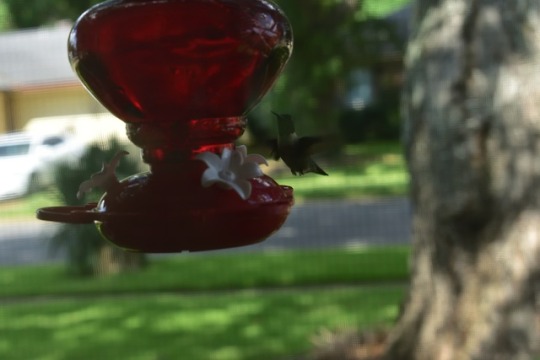
Glad to see my hummers again.
#ruby-throated hummingbird#conservation status: least concern#Animalia#Chordata#Aves#Apodiformes#Trochilidae#Trochilinae#Trochiliformes#Archilochus#Archilochus colubris#Trochilus colubris#hummingbirds#typical hummingbirds#Nikon D3400#nikonphotography#my birbs#photographers on tumblr#nature photography#birds of Canada#native birds of the Eastern United States#pollinator birds#wildlife
3 notes
·
View notes